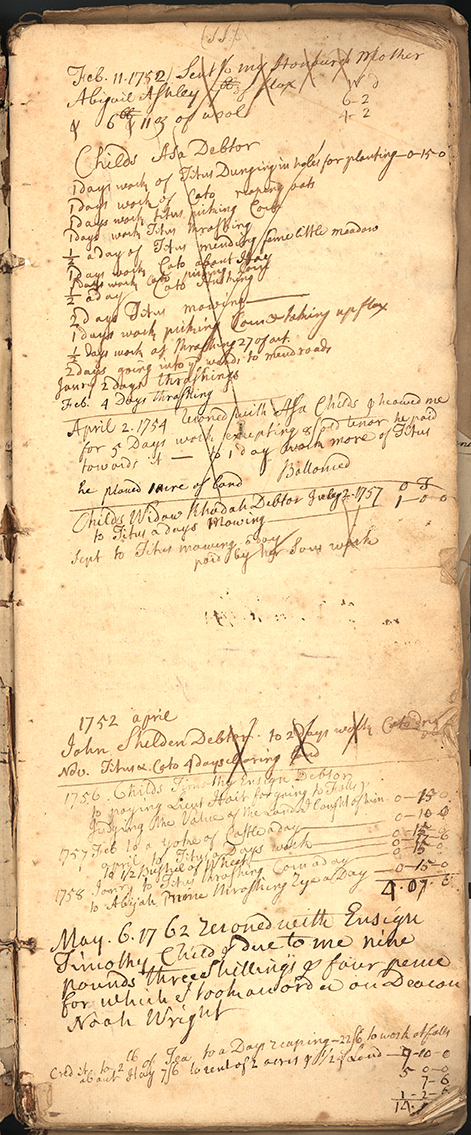Lucy Terry Prince
Topics & Ideas
WIREFRAME ONLY - NOT YET DESIGNED
Topics and Ideas
Enslaved Labor for Sale

About
Enslavers frequently made money by hiring out enslaved people in their household. This practice enabled those who did not own human property to purchase the labor of those enslaved by others.
Deerfield farmers participated in a network in which they sold and purchased enslaved labor among themselves and to others. Such transactions made slavery part of the day-to-day web of relationships that defined the community. Titus, for example, lived at the southern end of the Street with his master, Daniel Arms Jr. In addition to using him on his own land, Arms made money hiring Titus out to work for other farmers for periods ranging from half a day to several weeks. The tasks Titus performed were typical of other enslaved men and hired labor in general. These included seasonal, agricultural tasks such as threshing, breaking flax, shoveling manure, butchering and plowing. Among the Deerfield men who purchased Titus' labor were non-slave owners John Taylor, Ebenezer Barnard, David Saxton, David Childs, Seth Catlin, and Samuel Wells.
Similarly, Samuel Barnard regularly sold the labor of the two enslaved men in his household, Pompey and Titus. They threshed rye and oats, hoed, carted dung, mended fences, and fanned peas and oats. There were several Barnards, and they frequently shared resources, including Pompey and Titus. In the winter of 1740, Samuel Barnard’s father Joseph carefully recorded “An Accompt of Pompes Work.”